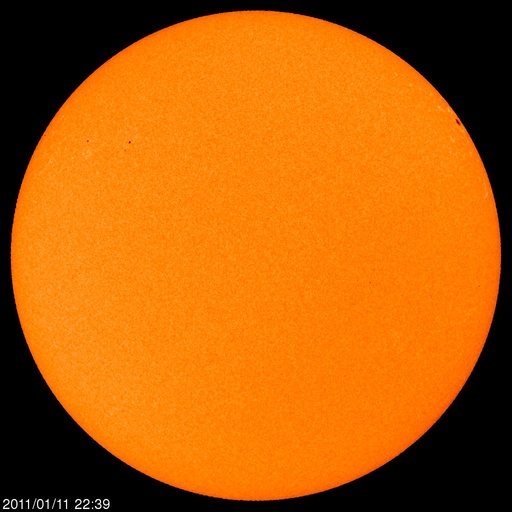That's sunspot group 484 back for another round.

Below is the Sun at a wavelength of 284 Angstroms (extreme UV light). Looks like that area is still busy!

Compare that with the following image at 171 Angstroms (extreme UV):


Below is the Sun at a wavelength of 284 Angstroms (extreme UV light). Looks like that area is still busy!

Compare that with the following image at 171 Angstroms (extreme UV):


|
|||||
Skywatchers with the best view of this rare event are those living in western North America. They’ll be able to see the star enter the ring system Friday evening and finally leave it 7 hours later.
For eastern North America and most of South America, Saturn is higher in the sky during the initial stages; the star should reach the Cassini Division in the rings shortly before 1 a.m. Eastern Standard Time. These viewers can see the star coast right up to the planet’s limb around 2 a.m. EST, but dawn will prevent them from seeing it come out the other side.
European observers are limited to watching the star just enter the ring system as morning twilight interferes.
Sky & Telescope contributing editor Thomas A. Dobbins notes that two British amateurs witnessed a similar occultation of a 7th-magnitude star in 1917. Using 5-inch and 9-inch telescopes, they could dimly see the star behind the outer ring (ring A), making that ring seem translucent. But they failed to see the star when it was behind the brighter B ring.
Titan Too!
Just one day before it encounters Saturn this week, the same 8.4-magnitude star will be occulted by Titan, Saturn’s largest moon. Bruno Sicardy (Paris Observatory) describes this event on his Web site and points out that it may produce a “central flash” around 0:13 Universal Time on November 14th. Most likely to be seen from parts of South Africa, and lasting up to 10 seconds, the flash is a visible focusing of the star’s light by Titan’s atmosphere.
An Occultation Primer
An Observing Guide to Saturn
Wow, I can not believe that 484 and 486 have returned once again. The next two weeks will be interesting to watch.